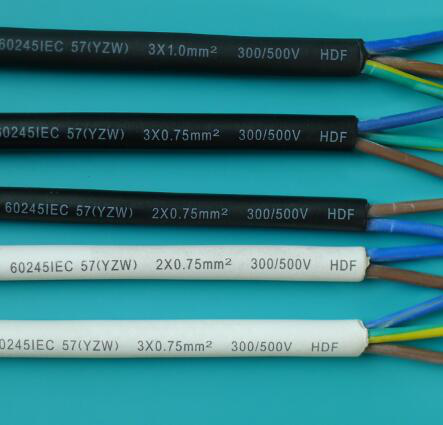How should we choose a power cable?
How to choose protection tube for wire and cable
1. The diameter of the cable protection tube of different materials is not the same. For example, the protection tube made of concrete, clay, asbestos, cement, etc. should have an inner diameter of not less than 100mm;
2. The bending radius of the protection tube should meet the requirements for the bending radius of the cable to be penetrated;
3, select the protection tube should pay attention to the inner diameter of the pipe body, can not choose less than 1.5 times the outer diameter of the cable or wire;
4, in order to ensure that the performance of the wire can be fully exerted, to ensure that each pipe does not exceed a maximum of three elbows, not more than two right angle bends. The above is the basic requirement for the selection of cable or wire protection tubes. In order to ensure the safety of electricity for homes or public buildings, in addition to the selection of protective tubes for the wires, they should also be selected in strict accordance with the regulations.
Power cable selection principle
1, wire and cable specifications
When determining the specification of the wire and cable (conductor cross section), general selection conditions such as heat generation, voltage loss, economic current density, and mechanical strength should be considered.
According to experience, the low-voltage power line has a large load current. Therefore, the cross-section is generally selected according to the heating condition, and then the voltage loss and mechanical strength are checked. The low-voltage lighting line can be subjected to the allowable voltage loss condition because of its high voltage level. Select the section, and then check the heating condition and mechanical strength; for the high-voltage line, first select the section according to the economic current density, and then check the heating condition and allowable voltage loss; and the high-voltage overhead line should also check the mechanical strength.
2, wire and cable model selection
When using wire and cable, consider the application, laying conditions and safety; for example,
Depending on the application, power cables, overhead insulated cables, control cables, etc. may be used;
According to the different laying conditions, general plastic insulated cable, steel tape armored cable, steel wire armored cable, anti-corrosion cable, etc. can be selected;
According to the safety requirements, non-flame retardant cables, flame retardant cables, halogen-free flame-retardant cables, fire-resistant cables, etc. can be selected.

How to choose power cable?
1, copper quality
The real copper is reddish in appearance, and the brass color is yellow, and the copper material is very soft and the brass material is hard. According to the current market situation, the brass cost is relatively small, as long as Don't buy copper-clad aluminum wire and cable.
2, wire diameter
The wire diameter is also a common way to cut corners in the production process of wire and cable. Take the 2.5 square BV line. In fact, this is the copper sheet that people often say in the mouth. So why is it called 2.5 square? Because the cross-sectional area of this BV wire copper wire is 2.5 square, the diameter of the 2.5 square BV wire should be 1.78 mm.
3, CCC certification mark
When purchasing wire and cable, you should pay attention to whether the CCC certification mark is marked on the wire and cable. According to relevant national regulations, all wire manufacturers must obtain the CCC certification mark certified

